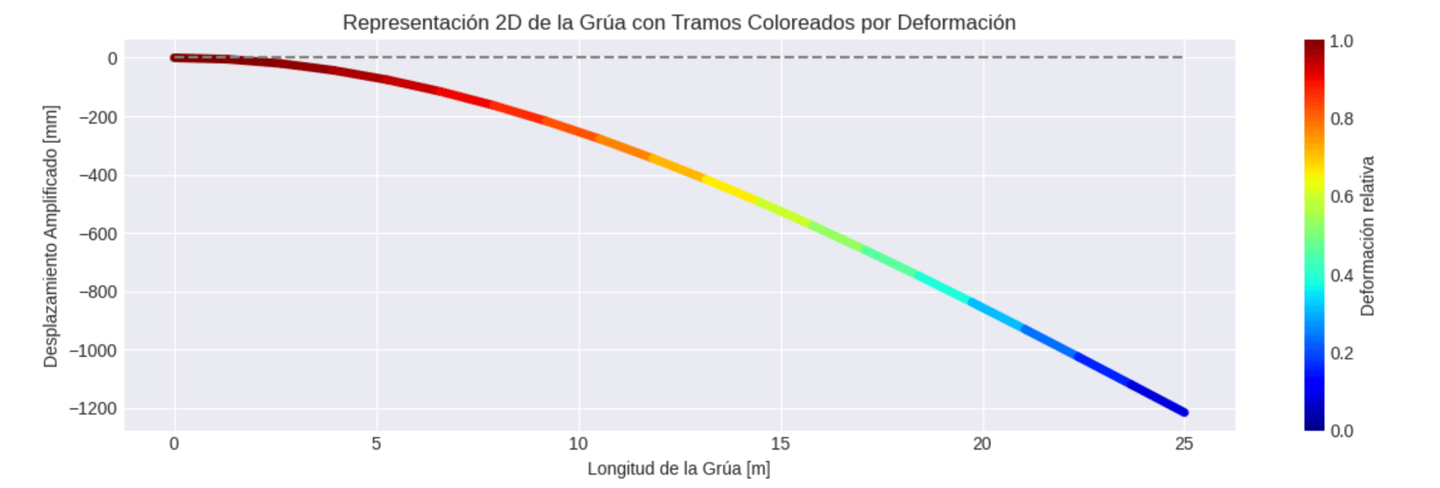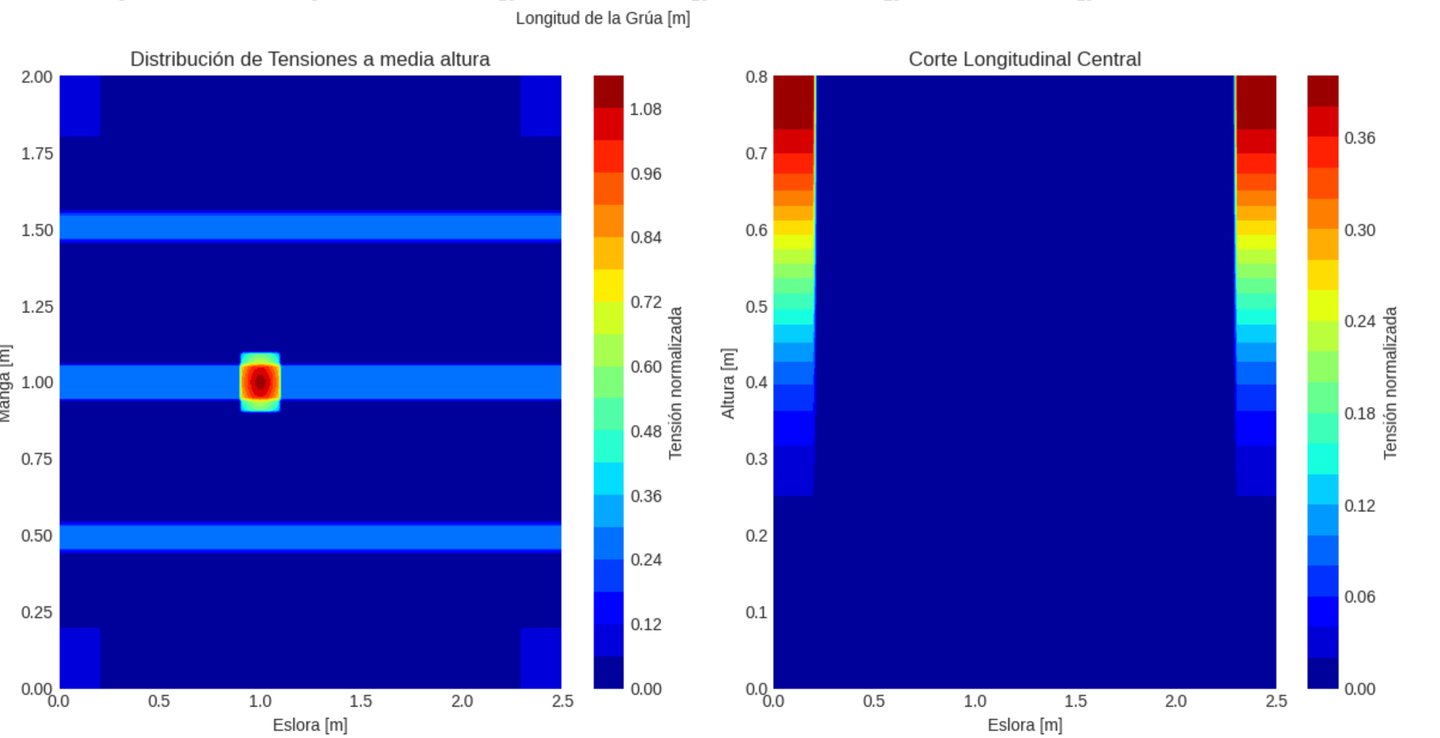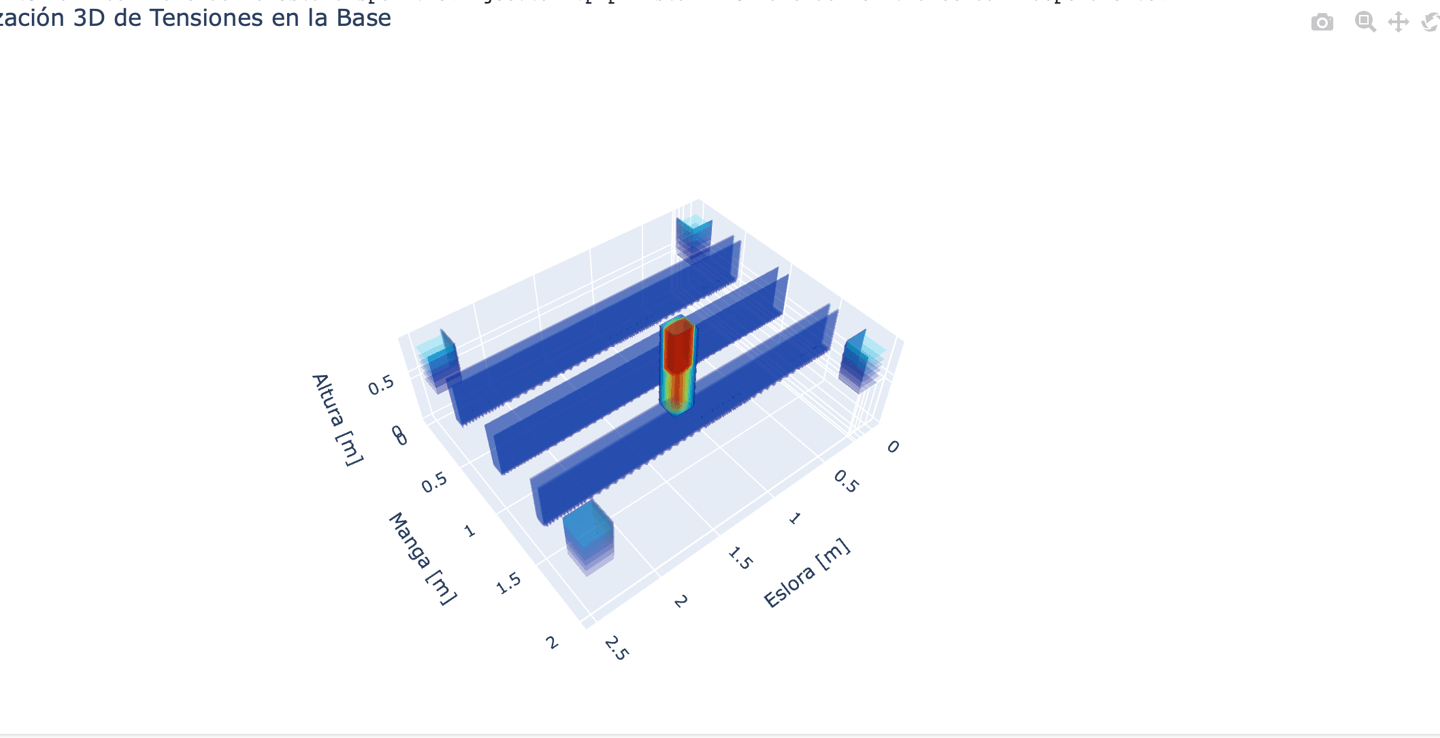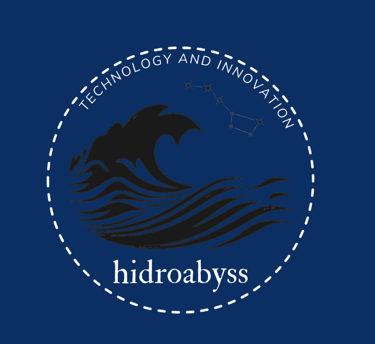A Professional Platform for Naval Structures Development
In the maritime and offshore environment, structures such as cranes, platforms, and auxiliary components face extreme challenges — heavy seas, strong winds, high loads, fatigue, and vibrations. HydroAbyss, developed by naval engineer Robert Garabán Garcías, offers robust and accessible solutions: a finite element (FEM)-based platform, fully open-source, coded in Python, and requiring no expensive licenses or specialized software — just a web browser. Directly from your browser, you can run real-world simulations (for example, an offshore pedestal-mounted crane handling loads of up to 50 tons), analyze deformations, stresses, buckling, and fatigue — all in compliance with international standards such as DNVGL-ST-0378 or ABS. Results are displayed in 3D visualizations, with full flexibility to modify materials, geometries, or boundary conditions using platforms like Google Colab or GitHub. HydroAbyss goes beyond models and simulations: it delivers applied knowledge, methodological traceability, and personalized technical support — positioning itself as a trusted partner in naval structural engineering and technical training. Its approach is truly groundbreaking: democratizing professional-grade tools and promoting hands-on, precise, and adaptive learning.
Robert Garabán Garcías
7/10/20254 min read
Modeling and Structural Analysis of Naval Offshore Systems with Python
A Practical Engineering Guide by HydroAbyss
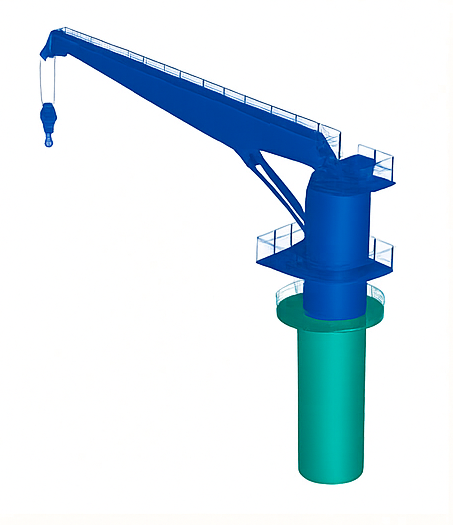

At the core of the maritime and offshore sector, structural integrity is everything. Every platform, crane, or auxiliary structure operating on a vessel or floating system must endure extreme conditions wind, waves, heavy loads, fatigue, and vibrations. Structural engineering in this environment must not only be precise, but also flexible, adaptive, and technically up to date.
With this mindset, HydroAbyss was born, a technical and educational company that provides open-access tools to model, simulate, and analyse naval structures using the finite element method (FEM), implemented entirely in Python. No expensive licenses, no specialized hardware. The entire project is designed to be practical, accessible, and adaptable for both professionals and students in structural, civil, or naval engineering.
In this article, we’ll show you how to use this system directly from your browser, run real-world simulations, and customize the code to match your specific structural needs. All with open links, clear explanations, and a fully hands-on approach.

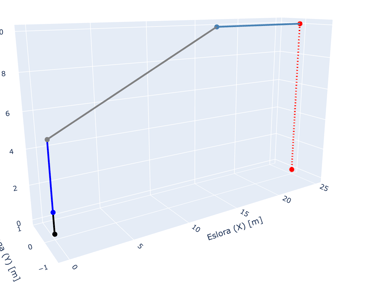
HydroAbyss is a company specialized in structural analysis, advanced naval solutions, and technical development tailored to the maritime and offshore sector. Founded by engineer Robert Garaban Garcías, the company was established with a clear mission: to provide highly specialized services in structural simulation, computer-aided design, and technical training, combining deep expertise with accessible and practical tools.
Since its formal foundation, HydroAbyss has focused on bridging the gap between traditional structural engineering and emerging digital methodologies. With a solid technical foundation in finite element methods, compliance with international standards such as DNVGL-ST-0378 and ABS, and practical experience in offshore structures, the company delivers both real-world project solutions and training resources for engineers, consultants, and students.
Among its core services, HydroAbyss develops and deploys fully functional structural models that can be executed externally for training, design validation, or technical research purposes. One of the cornerstones of this offering is a Python-based simulation environment, which has been openly shared as part of the company’s commitment to transparency and collaborative innovation.
This model, available through platforms such as Google Colab and GitHub, allows users to perform structural analyses in realistic scenarios. Users can modify materials, apply new loading conditions, adjust geometries, or simulate complex situations within minutes. The methodology is built on a professional philosophy that emphasizes traceability, clarity, and strict technical compliance.
HydroAbyss does more than deliver code or simulations. It provides structured engineering solutions, applied knowledge, and tailored technical support. Whether for naval engineering projects, specialized training, or the development of custom tools, the company positions itself as a reliable technical partner equipped to meet the demands of an evolving sector.
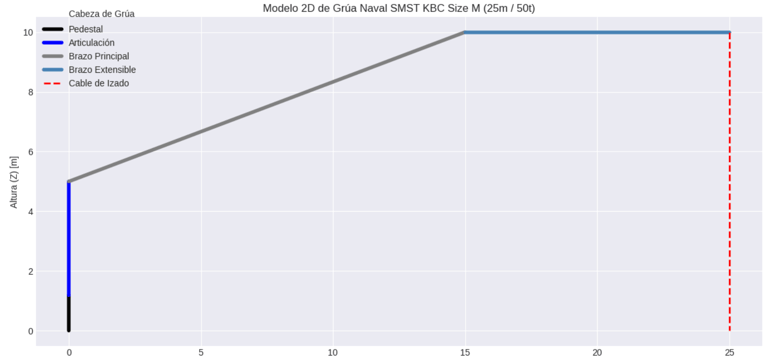


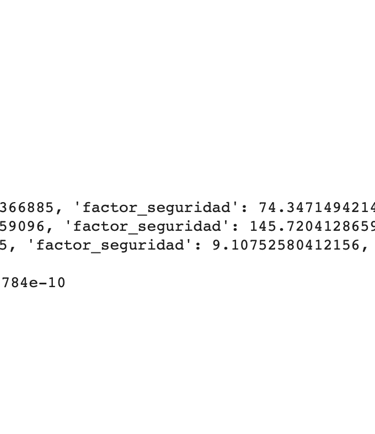
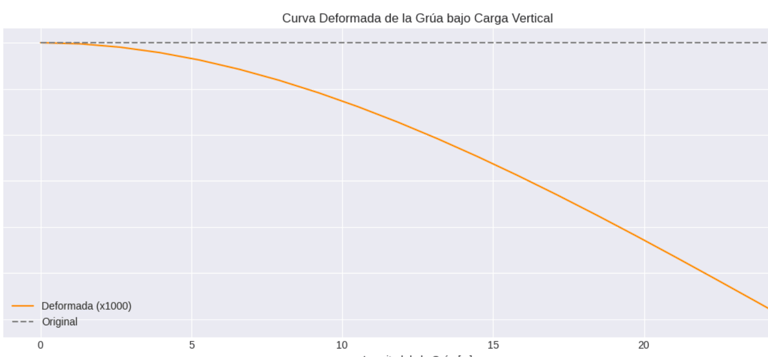



The implemented model represents an offshore crane mounted on a pedestal, structurally defined using 3D beam elements. A realistic load is applied (for example, 50 metric tons at the boom tip), and the analysis includes:
Vertical and lateral deformations
Internal stresses (axial force, bending, and torsion)
Structural buckling under critical loading
Response to wave and wind conditions
Long-term fatigue analysis
This type of simulation reflects typical offshore operational conditions and is aligned with international standards such as DNVGL-ST-0378 and ABS. Results are presented through 3D deformation plots, stress distribution maps, and response curves, offering a clear understanding of structural performance.
There are two ways to get started with the model:
👉 Run the simulation directly on Google Colab
📥 View and download the full code from GitHub
The analysis runs entirely in the browser—no installation is needed. Users can change geometric parameters, edit the mesh, redefine boundary conditions, or test alternative materials such as stainless steel or structural aluminum.
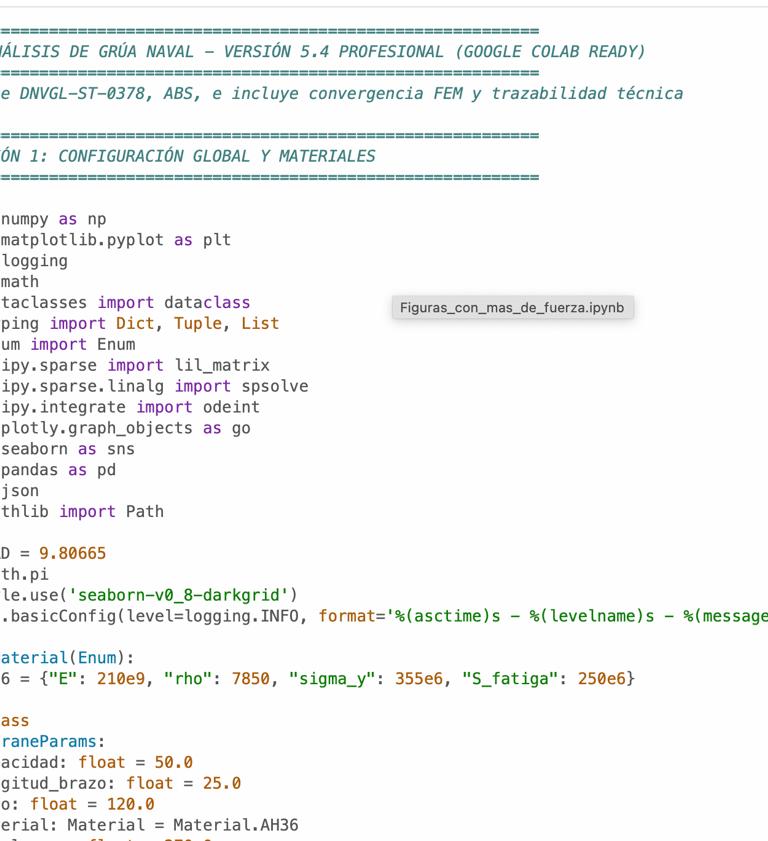

HydroAbyss offers something rarely found in the world of engineering: a powerful, open, well-documented, and legally accessible tool—available to any technically inclined user. By simply opening a notebook in your browser, you can perform advanced structural analyses on naval components, understand the inner workings of FEM models, and freely adapt them to your own engineering projects.
In upcoming articles, we will delve deeper into each section of the code: how the global stiffness matrix is constructed, how loads are applied, how to interpret structural responses, and how to export your own visual outputs and reports.
In the meantime, we invite you to explore the notebook, download it, test it, modify it, and make it your own. Because that’s where good engineering begins—with freedom, clarity, and purpose.
